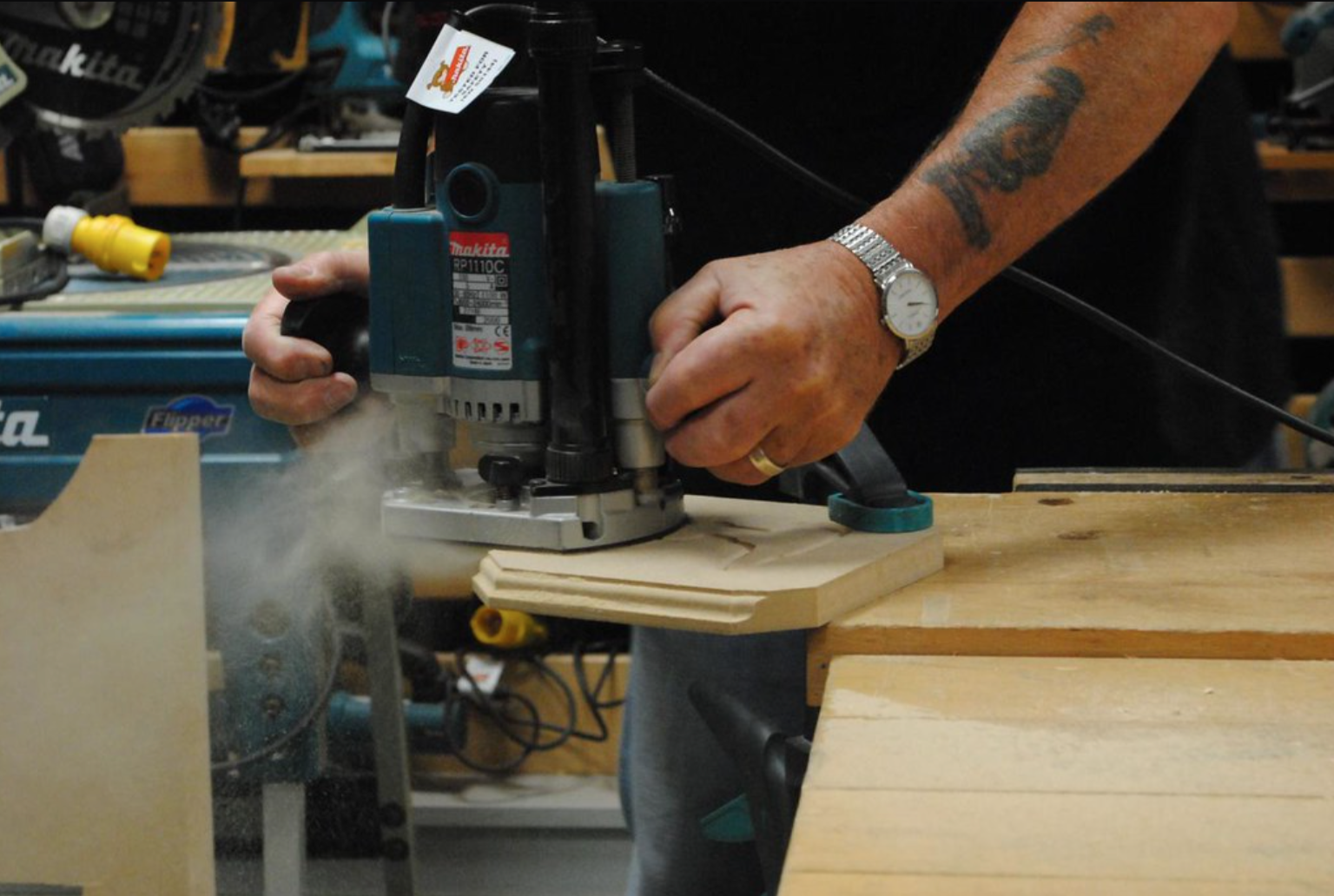You’ve got your wood router and you’re raring to go. But you might ask: How does a wood router work? Don’t fret, we’ve got you covered.
In this article, you’ll unravel the mystery behind this powerful tool. You’ll understand its parts, learn the basics of operation, discover practical tips and techniques, and grasp essential safety measures.
By the end, you’ll be wielding your wood router like a pro, crafting intricate designs with confidence.
Let’s dive in.
Key Takeaways
- Wood routers shape and trim various wood types.
- The speed of the router should be adjusted based on the hardness of the wood.
- Regular cleaning and lubrication are important for maintenance and safety.
- Precision and control are more important than speed when operating a wood router.
How Does a Wood Router Work? – The Basics
Before you can master the craft, you’ve got to understand the basic principles of a wood router. This versatile tool, with proper router maintenance, can shape and trim various wood types, adding an artisanal touch to your creations.
Knowing your wood types is critical; harder woods like oak require slower router speeds, while softer woods like pine can handle more speed.
Furthermore, maintaining your router ensures your tool’s longevity. This includes regular cleaning to prevent dust buildup, lubricating the necessary parts, and checking for wear and tear on the router bits.
Remember, a well-maintained router not only gives you precise cuts, but also enhances your safety while working.
Understanding the Different Parts of a Wood Router
You’ll need to identify at least five key parts of a wood router, and understand their functions to effectively use the tool.
The base is what you guide along your workpiece, with the motor housed inside, powering the spindle. It’s here that you’ll attach router accessories like bits, which cut your desired shapes.
The collet holds your bits in place, while the depth adjustment ring lets you control how deep you cut.
Router maintenance involves regularly checking these parts for wear and tear. You’ve got to ensure the motor runs smoothly, the base is stable, and the collet securely holds the bit. Routinely cleaning your router and lubricating moving parts can extend its life.
The Process of Using a Wood Router
In using a wood router, there are four main steps you’ve got to follow: setting up the router, choosing the right bit, adjusting the cut depth, and guiding the tool along your workpiece. Proper router maintenance ensures longevity and efficiency of your tool.
Bit selection is critical. The wrong bit can ruin your workpiece and even damage the router. Here are some tips for an effective bit selection:
- Consider the material of your workpiece
- Understand the desired cut depth
- Choose the right bit size
- Evaluate the bit’s material
- Check the bit’s compatibility with your router
Adjusting the cut depth requires precision, while guiding the tool demands patience and control.
Always remember, a well-maintained router and correctly chosen bit are key to successful woodworking.
Tips and Techniques for Operating a Wood Router
Mastering the technique of operating a wood router will significantly enhance the quality of your woodworking projects. You’ll need to understand router maintenance tips and router bit selection to truly excel.
Proper maintenance ensures your router’s longevity. It’s crucial to regularly clean your router, removing any dust or debris. This will help prevent overheating and maintain accuracy. Lubricate the motor shaft and collet to keep your router running smoothly.
Router bit selection is another key aspect. Choose bits that match the material you’re working with and the desired effect. Carbide-tipped bits, though more expensive, are durable and maintain sharpness longer. For intricate designs, go for smaller bits. Remember, it’s about precision and control, not speed.
Safety Measures When Working With a Wood Router
Always remember, it’s imperative to wear safety goggles and a dust mask when you’re working with a wood router to protect your eyes and lungs from sawdust. Additionally, follow these key safety measures for injury prevention:
- Never bypass the router’s safety features.
- Always disconnect the router from power during maintenance.
- Keep your workspace clean and free of debris.
- Use push sticks to guide wood through the router.
- Regularly check and maintain the sharpness of the bit.
Proper router maintenance is essential not only for the lifespan of your tool but also for your safety. It’s important to stay vigilant and prioritize safety over speed.
Careful practice and proper protection can help prevent injuries, giving you a safer, more efficient woodworking experience.


Leave a Reply